DPW Design Wavefolder Handleiding
DPW Design
Niet gecategoriseerd
Wavefolder
Bekijk gratis de handleiding van DPW Design Wavefolder (6 pagina’s), behorend tot de categorie Niet gecategoriseerd. Deze gids werd als nuttig beoordeeld door 29 mensen en kreeg gemiddeld 4.1 sterren uit 15 reviews. Heb je een vraag over DPW Design Wavefolder of wil je andere gebruikers van dit product iets vragen? Stel een vraag
Pagina 1/6

Wavefolder WF-1 and E-1 Expander
WF-1 is a Eurorack format wavefolder with some extra functions. It can be used for audio signal manipulation
or as a utility module for control voltages. Everything in the module is DC coupled.
It is mainly made up of two wavefolders. One for the positive side of the incoming wave folding it down and
one for the negative side of the wave folding it up. The two folders can be operated individually or connected
so you can fold asymmetrically or symmetrically.
Getting started
The artwork on the panel is done to explain the signal
paths in the module. White background of jacks
indicate outputs.
White lines represent clean signal.
Yellow lines represent the modulation and control path.
Red lines represent output signals.
The position of knobs and switches on the picture is a
good starting position.
In this position an audio signal in on IN will pass
unaffected to the OUT jack.
From this setting you can start turning OffP and OffN
towards its center position to activate the folders.
For audio OffP and OffN is mainly useful from center
position to fully clockwise.
You can see when the folder is starting to affect the
signal as the FoP and FoN LEDs starts flashing.
Turning the FoP away from the center position will add
or subtract a square wave to the OUT jack. FoP and
FoN are normaled to OUT via the main volume out,
orange knob.
You can see how much is being sent out from FoP and
FoN by the LED along the outgoing red lines.
Controls, in and outputs
IN
Audio or control voltages in. Whatever you want to affect with the module. The complete signal path through
the module is DC coupled.
Clean
Sets the amount of clean signal going to the main mix in the OUT jack.
OUT
The main mix output. The output volume is controlled via the orange out volume knob.
The signals FoP and FoN are normaled to the OUT jack via the out volume knob.
Both the folder part of the module, FoP and FoN can output +/-5V. So if all of them are full on the out volume
knob will have to be rolled down if you don't want the output to exceed +/-5V.
DPW Design, Häradsvägen 200, 14171 Segeltorp, Sweden
www.dpw.se MAN-WF-1 Rev B

OffP
Offset for the positive folder. This is the threshold value for the positive folder. It can be set from -8V to +8V.
For audio signals OffP is mainly usable from its center position to fully clockwise. That is from 0 to +8V.
Setting the offset to negative voltages can be useful for manipulating control voltages.
P
Control voltage in to the attenuverter P controlling the positive wavefolders offset voltage.
This signal is added to the OffP level.
The LED close to the P knob shows the output voltage from the attenuverter. Green is positive and red is
negative voltage going to the Mod knob that controls the amount of folding.
OffN
Offset for the negative folder. This is the threshold value for the negative folder. It can be set from +8V to -8V.
For audio signals OffP is mainly usable from its center position to fully clockwise. That is from 0 to -8V.
Setting the offset to positive voltages can be useful for manipulating control voltages.
N
Control voltage in to the attenuverter N controlling the negative wavefolders offset voltage.
This signal is added to the OffN level.
The LED close to the N knob shows the output voltage from the attenuverter. Green is positive and red is
negative voltage going to the Mod knob that controls the amount of folding.
Mod
The amount of signal fed down to the main mix resulting in the folding effect together with the Clean signal.
Mod controls the volume of the folding signal from the sum of the positive and negative folder.
The LED below the Mod knob shows the output voltage going to the main out mix. Green is positive and red
is negative voltage.
Sym
The folding is done individually on the positive and the negative side of the incoming signal when the switch
is down. Asymmetrical mode.
Setting the switch to Sym makes the folders go symmetrically, folding equally from both the positive and
negative side of the incoming signal.
With this setting OffN is disconnected and the offset value for both sides are controlled via OffP.
The attenuverter signals coming from P and N are added together and sent to both the positive and negative
folder.
FoP
Folder Positive. The FoP signal is normally low, -5V. When the positive folder is active the FoP signal goes
high, +5V. You can see this on the LED next to the FoP knob.
The FoP knob is an attenuverter. The output level from this attenuverter can be seen on the LED along the
red lines after the knob. Green for positive and red for negative voltages.
This output is max +/- 5V and can be used as an audio source or a gate signal.
If the FoN LED isn't flashing the folder has stopped in an on or off state and will output a DC voltage. Can be
useful when used with control voltages as a DC offset on the output.
The output of FoP is normaled to OUT via the main out volume control.
FoN
Folder Negative. The FoN signal is normally low, -5V. When the positive folder is active the FoP signal goes
high, +5V. You can see this on the LED next to the FoN knob.
DPW Design, Häradsvägen 200, 14171 Segeltorp, Sweden
www.dpw.se MAN-WF-1 Rev B

The FoN knob is an attenuverter. The output level from this attenuverter can be seen on the LED along the
red lines after the knob. Green for positive and red for negative voltages.
This output is max +/- 5V and can be used as an audio source or a gate signal.
If the FoN LED isn't flashing the folder has stopped in an on or off state and will output a DC voltage. Can be
useful when used with control voltages as a DC offset on the output.
The output of FoP is normaled to OUT via the main out volume control.
Lim/0/Dist
There are two different distortion alternatives on the output. It is not just two versions of the same distortion,
it is two completely different circuits that is being switched in.
The options are:
0
No distortion. Clean signal amplification trough the module is maximum one times with the orange out
volume knob set to full.
Lim
A non transparent limiting like distortion. In this case amplification of the orange out volume knob is
maximum 5 times. This gives the possibility to drive signals a bit in to the Lim distortion. The signal level is
then compressed via the Lim distortion.
Dist
A fuzz like distortion. In this case amplification of the orange out volume knob is maximum 20 times. This
gives the possibility to drive signals hard in to the Dist distortion. The signal level is then compressed via the
Dist distortion.
Expander E-1
As an option the E-1 expander can be used to control Lim and Dist on and off via external control signals or
audio rate signals. A positive signal of 1V or more will turn the distortion on.
The Lim/0/Dist switch on the Wavefolder overrides signals put in to the Lim and Dist jacks on the E-1.
This means that you can for instance have a audio signal in on the Dist jack on the E-1 modulating the output
at audio rate and freeze it on with the switch.
An other application could be attaching the Lim and Dist jacks on the E-1 to a sequencer and use it to get
two types of accent to notes played.
Device specs
Module size: 12 hp wide, 25 mm deep with power connector.
Input impedance: 100 kohm
Output impedance: 1 kohm
Power requirements: +/- 12V. Max power consumption 140 mA
Connect the power cable with the red stripe (-12V) down.
The unit is protected for reverse power.
The E-1 Expander is completely passive, 2 hp wide and 25 mm deep including connector.
Connect the cable with red stripe down towards the Dist jack on the E-1 and with the
red stripe towards the D printed on the WF-1.
DPW Design, Häradsvägen 200, 14171 Segeltorp, Sweden
www.dpw.se MAN-WF-1 Rev B
Product specificaties
| Merk: | DPW Design |
| Categorie: | Niet gecategoriseerd |
| Model: | Wavefolder |
Heb je hulp nodig?
Als je hulp nodig hebt met DPW Design Wavefolder stel dan hieronder een vraag en andere gebruikers zullen je antwoorden
Handleiding Niet gecategoriseerd DPW Design

15 Augustus 2023

15 Augustus 2023

15 Augustus 2023

15 Augustus 2023

15 Augustus 2023

15 Augustus 2023

15 Augustus 2023

15 Augustus 2023
Handleiding Niet gecategoriseerd
- AmerBox
- Goki
- Hubelino
- LAFE
- Korona
- Alcatel
- Huion
- CasaFan
- Sabco
- Sportime
- Toorx
- Memphis
- Prestige
- Z CAM
- Bright Starts
Nieuwste handleidingen voor Niet gecategoriseerd
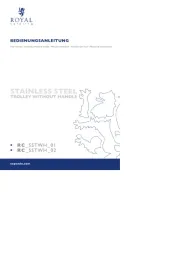
18 September 2025

18 September 2025
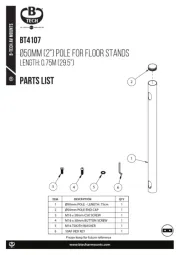
18 September 2025
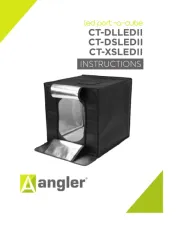
18 September 2025
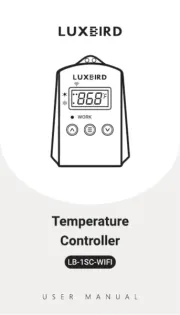
18 September 2025
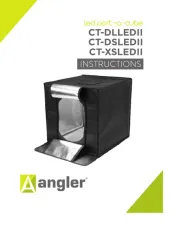
18 September 2025
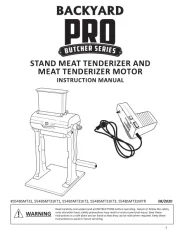
18 September 2025
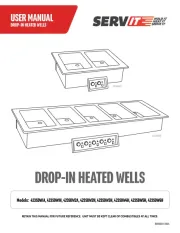
18 September 2025
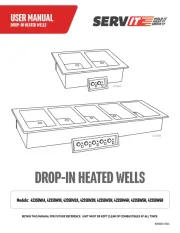
18 September 2025
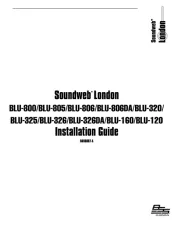
18 September 2025